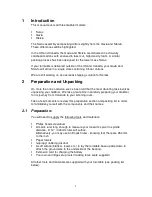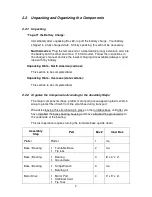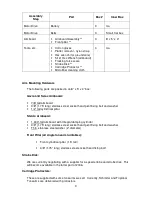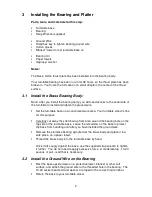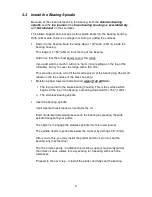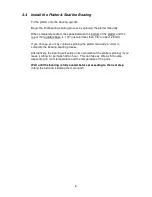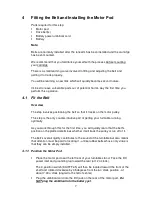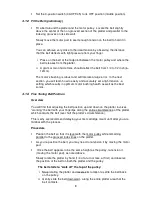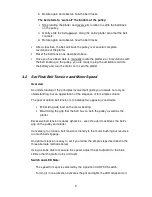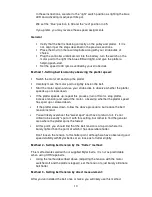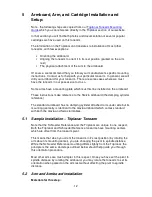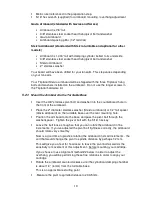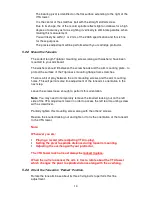
14
The bearing pivot is identified on the flat surface extending to the right of the
VTA tower.
It is the center of the small hex bolt with the straight slotted screw.
Due to its shape, the of the record spindle reflects light and allows for a high
degree of accuracy as far as sighting it vertically to elimintate parallax. when
making this measurement.
You will likely be within 1 or 2 mm of the 233.5 specification and this is fine
for these purposes.
The precise adjustment will be performed with your cartridge protractor.
5.2.2
Mount the Tonearm
The correct length Triplanar mounting screws (along with washers) have been
mounted to your armboard.
The washers should fit between the screw heads and the arm mounting plate - to
protect the surface of the Triplanar’s mounting flange from scratches.
There is a bit of play between the arm mounting screws and the arm mounting
holes. This will permit some fine adjustment of the tonearm's orientation in the
next step.
Leave the screws loose enough to perform this orientation.
Note
: You may need to temporarily remove the knurled locking nut on the left
side of the VTA adjustment tower in order to access the left rear mounting screw
with a screwdriver.
Partially tighten this mounting screw along with the other 2 screws.
Restore the knurled locking nut and tighten it to fix the orientation of the tonearm
to the VTA tower.
Note:
Whenever you are:
Playing a record (after adjusting VTA in-play),
Setting the pivot to spindle distance during tonearm mounting
Adjusting the overhang with your protractor,
The VTA tower lock nut must always be locked in place.
When the nut is loosened, the arm is free to rotate about the VTA tower
which changes the pivot to spindle distance along with the overhang.
5.2.3
Orient the Tonearm’s “Parked” Position.
Rotate the tonearm base about its three fixing bolts to perform this fine
adjustment.


